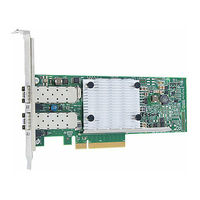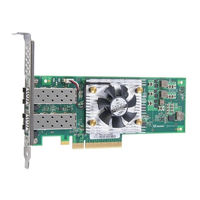Qlogic 3400 Series Manuals
Manuals and User Guides for Qlogic 3400 Series. We have 3 Qlogic 3400 Series manuals available for free PDF download: User Manual
Qlogic 3400 Series User Manual (391 pages)
Converged Network Adapters and Intelligent Ethernet Adapters
Table of Contents
Advertisement
Qlogic 3400 Series User Manual (28 pages)
Ethernet Adapters OpenStack Deployment with VXLAN Configuration
Table of Contents
Qlogic 3400 Series User Manual (32 pages)
OpenStack Deployment with SR-IOV Configuration
Table of Contents
Advertisement
Advertisement


